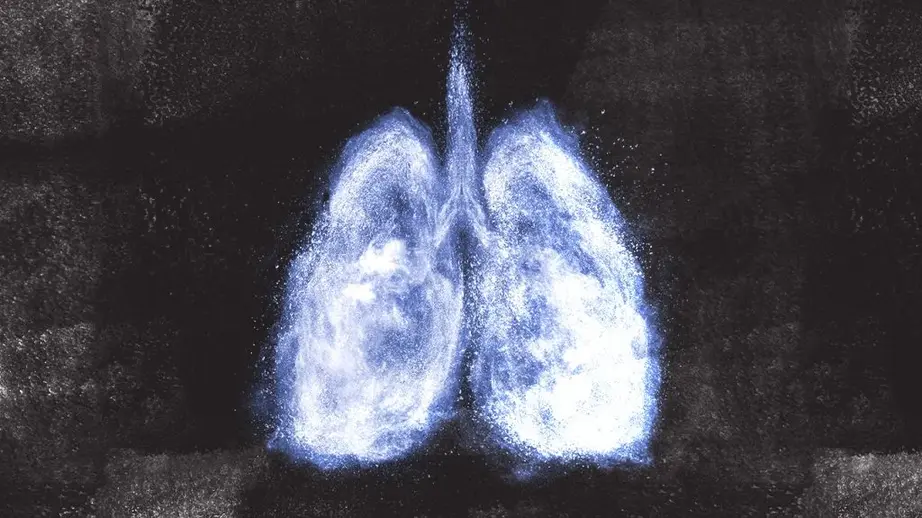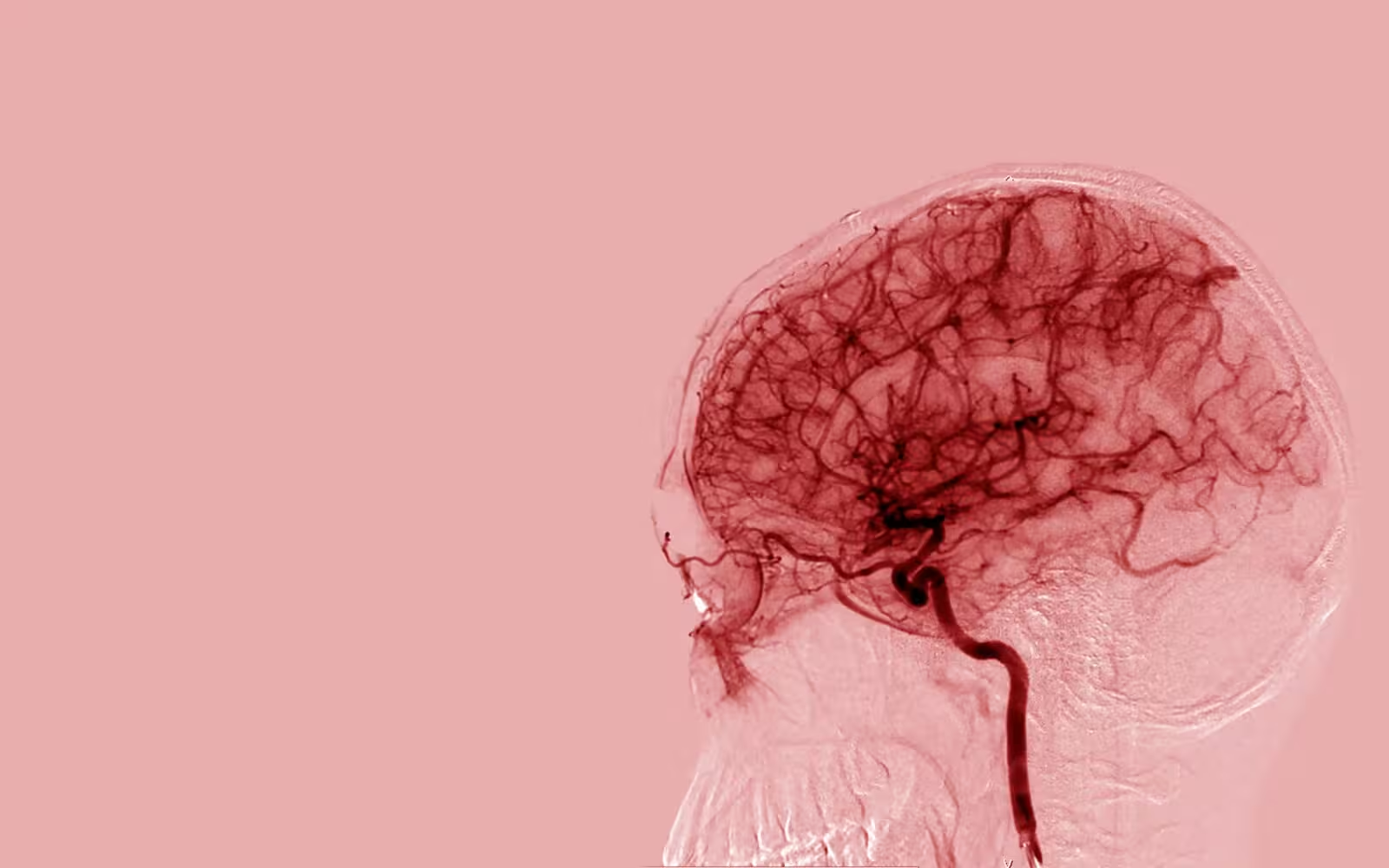Asthma is a chronic respiratory condition that inflames and narrows the airways in the lungs. This inflammation leads to recurring symptoms such as wheezing, coughing, chest tightness, and shortness of breath. Asthma is a manageable condition, but it requires ongoing medical attention and adherence to a treatment plan.
1. Asthma Symptoms: Recognizing the Signs
Asthma is a chronic respiratory condition characterized by inflammation and narrowing of the airways, making breathing difficult. Symptoms can vary in severity and frequency from person to person.
Common Asthma Symptoms:
- Shortness of breath: Difficulty breathing, feeling out of breath, or gasping for air.
- Chest tightness or pain: A constricting or squeezing sensation in the chest.
- Wheezing: A whistling sound when exhaling, caused by narrowed airways.
- Coughing: A persistent cough, especially at night or early morning.
Asthma Attacks:
An asthma attack occurs when asthma symptoms worsen rapidly. Signs of an asthma attack include:
- Severe wheezing and coughing
- Difficulty talking due to shortness of breath
- Rapid breathing and heart rate
- Chest tightness or pain
- Feeling anxious or restless
- Pale, clammy skin
- Blue lips or fingernails (in severe cases)
Early Warning Signs: Recognizing early warning signs of an asthma attack can help prevent more severe symptoms. These signs may vary from person to person but can include:
- Increased mucus production
- Runny nose or congestion
- Itchy throat or chest
- Feeling tired or lacking energy
- Changes in peak flow meter readings
2.Asthma Triggers: Understanding What Sets Off Symptoms
Asthma is a chronic condition characterized by inflammation and narrowing of the airways, leading to breathing difficulties. While the exact causes of asthma remain unclear, certain factors can trigger asthma symptoms. Identifying and managing these triggers is crucial for effective asthma control.
Common Asthma Triggers
- Allergens: Substances that trigger an allergic reaction can also trigger asthma symptoms. Common allergens include:
- Indoor allergens: Dust mites, pet dander, mold, and cockroach allergens.
- Outdoor allergens: Pollen from trees, grasses, and weeds.
- Irritants: Exposure to irritants can inflame the airways and trigger asthma symptoms. Common irritants include:
- Air pollution: Smoke, vehicle exhaust, and industrial emissions.
- Strong odors and fumes: Perfumes, cleaning chemicals, and cooking fumes.
- Cold air: Breathing in cold air can trigger asthma symptoms in some people.
- Respiratory Infections: Colds, flu, and other respiratory infections can worsen asthma symptoms or trigger an asthma attack.
- Exercise: Physical activity can trigger exercise-induced asthma in some individuals.
- Emotions: Stress, anxiety, and strong emotions can sometimes trigger asthma symptoms.
- Medications: Certain medications, such as aspirin, beta-blockers, and nonsteroidal anti-inflammatory drugs (NSAIDs), can trigger asthma attacks in susceptible individuals.
- Food Additives: Some food additives, such as sulfites, can trigger asthma symptoms in certain people.
Identifying Your Triggers
To effectively manage asthma, it’s essential to identify your specific triggers. Keeping an asthma diary can help you track your symptoms and identify patterns. This information can be shared with your healthcare provider to develop a personalized treatment plan.
By understanding and avoiding your triggers, you can significantly reduce the frequency and severity of asthma attacks and improve your overall quality of life.
3.Types of Asthma
Asthma is a complex condition with various classifications based on different factors. Understanding these types can aid in effective management.
Based on Severity and Persistence
- Intermittent Asthma: Symptoms occur infrequently and are mild.
- Mild Persistent Asthma: Symptoms occur more than twice a week but not daily.
- Moderate Persistent Asthma: Daily symptoms with frequent exacerbations.
- Severe Persistent Asthma: Frequent symptoms with limited activity and frequent exacerbations.
Based on Triggers and Pathophysiology
- Allergic Asthma: Triggered by allergens like pollen, dust mites, or pet dander.
- Non-Allergic Asthma: Caused by factors other than allergies, such as exercise, cold air, or irritants.
- Occupational Asthma: Develops due to exposure to substances in the workplace.
- Exercise-Induced Asthma: Triggered by physical activity.
- Aspirin-Exacerbated Respiratory Disease (AERD): A condition where asthma symptoms worsen after taking aspirin or other NSAIDs.
- Nocturnal Asthma: Primarily occurs at night or early morning.
- Cough-Variant Asthma: Characterized primarily by a cough without typical asthma symptoms like wheezing.
- Severe Asthma: Difficult to control despite optimal treatment.
Based on Inflammatory Patterns
Recent research has focused on classifying asthma based on the type of inflammation in the airways:
- Eosinophilic Asthma: Characterized by an increased number of eosinophils, a type of white blood cell.
- Neutrophilic Asthma: Predominantly involves neutrophils, another type of white blood cell.
- Mixed Asthma: Features a combination of eosinophils and neutrophils.
- Non-Eosinophilic Asthma: Low levels of eosinophils.
It’s important to note that these classifications are not mutually exclusive, and many individuals may have overlapping features. Accurate diagnosis and classification are essential for tailoring treatment plans to specific asthma characteristics.
4.Asthma in Children: Understanding and Management
Asthma is a chronic respiratory condition affecting millions of children worldwide. It’s characterized by inflammation and narrowing of the airways, leading to recurring symptoms like wheezing, coughing, shortness of breath, and chest tightness.
Symptoms of Asthma in Children
Recognizing asthma symptoms in children can be challenging as they often overlap with other common childhood illnesses. Key indicators include:
- Wheezing: A whistling sound when exhaling.
- Coughing: Persistent cough, especially at night or after exercise.
- Shortness of breath: Difficulty breathing or feeling out of breath.
- Chest tightness: A squeezing or pressure sensation in the chest.
- Frequent respiratory infections: Recurrent colds, bronchitis, or pneumonia.
- Hyperactivity or restlessness: Difficulty concentrating or staying still.
- Poor sleep: Frequent nighttime awakenings due to coughing or difficulty breathing.
It’s important to note that asthma symptoms can vary in severity and frequency among children. Some children may experience mild symptoms, while others may have more severe and frequent attacks.
Triggers of Asthma in Children
Identifying common triggers can help in managing asthma effectively. Common triggers include:
- Allergies: Dust mites, pet dander, mold, pollen, and certain foods.
- Irritants: Smoke, air pollution, strong odors, and chemical fumes.
- Respiratory Infections: Colds, flu, and other viral infections.
- Exercise: Physical activity can trigger asthma symptoms in some children.
- Cold Air: Breathing in cold air can trigger asthma attacks.
- Emotions: Stress and anxiety can worsen asthma symptoms.
Diagnosis and Management
Diagnosing asthma in children involves a comprehensive evaluation by a pediatrician. It often includes a detailed medical history, physical examination, and pulmonary function tests. Once diagnosed, a treatment plan is developed to manage symptoms and prevent attacks.
Asthma management typically involves a combination of:
- Medications: Inhaled corticosteroids, bronchodilators, and other medications as prescribed.
- Avoiding Triggers: Identifying and minimizing exposure to allergens and irritants.
- Education and Support: Understanding the condition and learning how to manage symptoms.
- Regular Check-ups: Monitoring asthma control and adjusting treatment as needed.
With proper management, children with asthma can lead active and healthy lives. It’s essential to work closely with a pediatrician to develop a personalized treatment plan.
5. Diagnosing Asthma: A Comprehensive Approach
Asthma is a chronic respiratory condition characterized by inflammation and narrowing of the airways. Accurately diagnosing asthma can be complex as symptoms often overlap with other respiratory conditions.
Key Components of Asthma Diagnosis
- Medical History: A detailed medical history is essential. This includes information about the onset and frequency of symptoms, triggers, family history of asthma or allergies, and previous treatments.
- Physical Examination: A thorough physical examination is conducted to assess lung function, heart rate, and overall health.
- Spirometry: This is a pulmonary function test that measures how much air you can exhale and how quickly you can exhale it. It helps to assess airflow limitation, a hallmark of asthma.
- Peak Flow Meter: This device measures the peak airflow during a forced exhalation. It can help monitor changes in lung function over time.
- Challenge Tests: In some cases, challenge tests may be performed to identify specific triggers. These tests involve exposing the patient to potential allergens or irritants to observe their reaction.
- Allergy Testing: Allergy tests can help identify allergens that may be contributing to asthma symptoms.
- Blood Tests: Blood tests may be used to rule out other conditions or measure levels of inflammation.
Differentiating Asthma from Other Conditions
It’s essential to differentiate asthma from other respiratory conditions that may mimic its symptoms, such as chronic obstructive pulmonary disease (COPD), bronchitis, or pneumonia. A comprehensive evaluation, including medical history, physical examination, and diagnostic tests, is crucial for accurate diagnosis.
Challenges in Asthma Diagnosis
Diagnosing asthma can be challenging, especially in children or individuals with mild symptoms. Asthma symptoms can vary over time, and triggers can change. Additionally, some people may experience asthma-like symptoms only during specific activities, such as exercise.
Importance of Accurate Diagnosis
An accurate asthma diagnosis is essential for developing an effective treatment plan. Misdiagnosis can lead to inappropriate treatment, which may worsen symptoms or increase the risk of complications.
By carefully considering the patient’s medical history, conducting thorough examinations, and utilizing appropriate diagnostic tools, healthcare providers can accurately diagnose asthma and develop a tailored treatment plan.
6. Asthma Treatment: Managing the Condition
Asthma is a chronic condition, but with proper management, individuals can effectively control their symptoms and live active lives. Treatment typically involves a combination of medications, lifestyle modifications, and environmental control.
Asthma Medications
There are two primary categories of asthma medications:
- Quick-Relief Medications (Bronchodilators): These medications provide rapid relief from asthma symptoms by relaxing the muscles in the airways, allowing for easier breathing. They are typically inhaled using an inhaler and provide immediate relief during an asthma attack.
- Short-acting beta-agonists (SABAs): Albuterol is a common example.
- Long-Term Control Medications: These medications are taken daily to prevent asthma attacks and reduce inflammation in the airways. They are essential for managing asthma effectively.
- Inhaled corticosteroids: The most effective long-term control medications, they reduce inflammation in the airways.
- Long-acting beta-agonists (LABAs): Relax the airways and prevent constriction.
- Combined inhalers: Combine a corticosteroid and a long-acting beta-agonist in one inhaler for convenience.
- Leukotriene modifiers: Block the effects of leukotrienes, inflammatory substances in the airways.
- Oral corticosteroids: Used for severe asthma attacks or when other treatments are ineffective.
Asthma Action Plans
An asthma action plan is a personalized guide developed by a healthcare provider to help manage asthma symptoms. It outlines specific steps to take depending on the severity of symptoms, including when to use quick-relief medications and when to seek medical attention.
Environmental Control
Managing asthma involves creating an environment that minimizes exposure to triggers. This includes:
- Identifying and avoiding allergens
- Keeping the home clean and dust-free
- Using air purifiers
- Managing indoor humidity
- Proper ventilation
Lifestyle Modifications
Lifestyle factors play a significant role in asthma management:
- Regular exercise: Improves lung function and overall health.
- Weight management: Maintaining a healthy weight can help manage asthma symptoms.
- Stress management: Techniques like relaxation and meditation can help reduce asthma triggers.
- Smoking cessation: If you smoke, quitting is essential for improving lung health.
Monitoring and Follow-Up
Regular check-ups with a healthcare provider are crucial for monitoring asthma control, adjusting medications as needed, and identifying potential problems. Using a peak flow meter can help track lung function and identify early signs of worsening asthma.
By working closely with a healthcare provider and implementing a comprehensive management plan, individuals with asthma can effectively control their symptoms and enjoy an active lifestyle.
7.How to Use an Inhaler Correctly
Proper inhaler technique is essential for effective asthma management. Here’s a general guide on how to use a standard metered-dose inhaler (MDI). Always refer to the specific instructions provided with your inhaler for accurate usage.
Steps to Use an Inhaler
- Check the inhaler: Ensure the inhaler is not empty and shake it well before use.
- Remove the cap: Take off the cap from the inhaler mouthpiece.
- Prepare to inhale: Sit or stand up straight. Breathe out completely.
- Position the inhaler: Hold the inhaler upright with the mouthpiece between your lips.
- Inhale and press: As you start to breathe in slowly through your mouth, press down on the top of the inhaler to release a puff of medication.
- Hold your breath: Continue breathing in slowly and deeply, then hold your breath for about 10 seconds.
- Exhale slowly: Breathe out slowly through your mouth.
- Rinse your mouth: If you’re using a corticosteroid inhaler, rinse your mouth with water and spit it out to prevent oral thrush.
Using a Spacer
For optimal medication delivery, consider using a spacer. A spacer is a device that attaches to the inhaler and helps you inhale the medication more effectively.
- Attach the spacer: Connect the spacer to the inhaler mouthpiece.
- Breathe out: Exhale completely.
- Place the spacer in your mouth: Close your lips around the mouthpiece.
- Activate the inhaler: Press down on the inhaler to release the medication into the spacer.
- Breathe in slowly and deeply: Breathe in slowly through your mouth for several seconds.
- Hold your breath: Hold your breath for 10 seconds before exhaling.
- Rinse your mouth: If using a corticosteroid inhaler, rinse your mouth with water and spit it out.
Important Tips:
- Practice using your inhaler correctly under the guidance of a healthcare professional.
- Clean your inhaler and spacer regularly according to the manufacturer’s instructions.
- If you’re experiencing difficulty using your inhaler, consult your doctor or pharmacist for assistance.
8.Asthma Prevention: Managing Triggers and Reducing Symptoms
While there’s no definitive cure for asthma, effective management strategies can significantly reduce the frequency and severity of asthma attacks. Preventing asthma attacks involves identifying and avoiding triggers, maintaining a healthy lifestyle, and adhering to prescribed medications.
Identifying and Avoiding Triggers
- Allergen Control:
- Encase mattresses, pillows, and bedding in allergen-proof covers.
- Regularly wash bedding in hot water.
- Remove carpets and upholstered furniture if possible.
- Use air purifiers with HEPA filters to remove allergens from the air.
- Keep pets out of bedrooms.
- Irritant Avoidance:
- Avoid exposure to tobacco smoke, both firsthand and secondhand.
- Minimize exposure to strong odors, chemicals, and air pollutants.
- Use ventilation when cooking or cleaning with harsh chemicals.
- Monitor indoor humidity levels to prevent mold growth.
- Exercise-Induced Asthma:
- Warm up before exercise to gradually increase heart rate and breathing rate.
- Use a preventive medication before exercise, as prescribed by your doctor.
- Choose less strenuous activities or modify exercise intensity if necessary.
Lifestyle Modifications
- Weight Management: Maintaining a healthy weight can improve lung function.
- Regular Exercise: While exercise can trigger asthma symptoms in some people, it’s essential for overall health. Consult your doctor to develop an appropriate exercise plan.
- Stress Management: Practice relaxation techniques like yoga, meditation, or deep breathing to manage stress, a common asthma trigger.
- Good Nutrition: A balanced diet can help maintain overall health and may contribute to better asthma control.
- Adequate Sleep: Ensure you get enough quality sleep to support your immune system and overall well-being.
Medication Adherence
- Follow Your Treatment Plan: Adhere to the prescribed medication regimen as directed by your doctor.
- Learn How to Use Your Inhaler: Proper inhaler technique is crucial for effective medication delivery.
- Regular Check-ups: Schedule regular appointments with your healthcare provider to monitor asthma control and adjust treatment as needed.
Environmental Control
- Home and Workplace: Create a clean and allergen-free environment by regularly cleaning and dusting.
- Outdoor Precautions: Check pollen counts and air quality forecasts before spending time outdoors.
- Monitor Weather Changes: Be aware of weather patterns that can trigger asthma symptoms, such as cold fronts or thunderstorms.
By implementing these prevention strategies, individuals with asthma can significantly improve their quality of life and reduce the frequency and severity of asthma attacks.
9.Living with Asthma
Living with asthma requires a comprehensive approach to manage symptoms and improve quality of life. Understanding and implementing coping strategies, building support networks, and utilizing educational resources are essential components of effective asthma management.
Coping Strategies
Medication Adherence
- Consistently using prescribed medications, including long-term control and quick-relief inhalers, helps to prevent and manage asthma symptoms.
- It’s important to follow the asthma action plan developed with a healthcare provider.
Trigger Avoidance
- Identifying and avoiding asthma triggers, such as allergens, smoke, pollution, and strong odors, can significantly reduce the frequency and severity of asthma attacks.
- Keeping indoor environments clean and free of dust mites, mold, and pet dander is crucial.
Breathing Techniques
- Practicing breathing exercises, such as diaphragmatic breathing and pursed-lip breathing, can help manage shortness of breath and improve lung function.
- Techniques like the Buteyko method and yoga can also be beneficial.
Healthy Lifestyle
- Maintaining a healthy diet, regular exercise, and adequate sleep supports overall health and helps to manage asthma symptoms.
- Weight management is particularly important, as obesity can exacerbate asthma.
Stress Management
- Managing stress through relaxation techniques, meditation, and mindfulness can help reduce asthma symptoms triggered by emotional stress.
- Counseling and support groups can provide additional help in coping with anxiety related to asthma.
Regular Monitoring
- Using a peak flow meter to monitor lung function can help detect early signs of an asthma flare-up.
- Keeping an asthma diary to track symptoms, triggers, and medication use can provide valuable information for managing the condition.
Support Networks
Family and Friends
- Educating family and friends about asthma can help them understand the condition and provide necessary support.
- Having a support system in place can reduce anxiety and provide emotional comfort during asthma attacks.
Healthcare Providers
- Regular check-ups with healthcare providers, including primary care doctors and specialists, ensure proper asthma management and adjustment of treatment plans as needed.
- Respiratory therapists and asthma educators can offer additional guidance and support.
Support Groups
- Joining asthma support groups, either in-person or online, can provide a sense of community and shared experiences.
- Support groups offer a platform to exchange tips, coping strategies, and emotional support with others who understand the challenges of living with asthma.
Schools and Workplaces
- Informing teachers, school nurses, and employers about asthma can help create a supportive environment and ensure that appropriate accommodations are made.
- Having an asthma action plan on file at school or work can prepare others to assist during an asthma emergency.
Educational Resources
Online Resources
- Websites like the American Lung Association, Asthma and Allergy Foundation of America, and National Heart, Lung, and Blood Institute provide comprehensive information on asthma management, treatment options, and current research.
- Online forums and social media groups can offer peer support and shared experiences.
Printed Materials
- Books, pamphlets, and brochures on asthma provide valuable information on managing the condition.
- Educational materials from healthcare providers can offer personalized advice and guidelines.
Workshops and Classes
- Attending asthma education workshops and classes can enhance understanding of the condition and provide practical skills for managing symptoms.
- Many hospitals and community health centers offer asthma education programs.
Mobile Apps
- Mobile apps designed for asthma management can help track symptoms, medication use, and peak flow readings.
- Apps often include reminders for medication and doctor appointments, helping to ensure adherence to treatment plans.
10.Conclusion
Importance of Early Diagnosis and Treatment
Early diagnosis and treatment of asthma are crucial in preventing the progression of the disease and minimizing its impact on daily life. Identifying asthma early allows for the implementation of appropriate management strategies, reducing the frequency and severity of symptoms and preventing asthma attacks. Timely intervention can improve lung function, enhance quality of life, and reduce the risk of complications such as respiratory infections and irreversible airway damage. Early treatment, including the use of inhaled corticosteroids and other medications, can help control inflammation and maintain normal airway function, making it easier for individuals to lead active and healthy lives.
Encouragement for Regular Medical Follow-Up
Regular medical follow-up is essential for effective asthma management. Continuous monitoring and regular check-ups with healthcare providers ensure that the treatment plan remains effective and is adjusted as needed. Medical follow-ups provide opportunities to address any concerns, review symptoms, and modify medications based on changes in the patient’s condition. This proactive approach helps in identifying potential triggers, assessing lung function, and ensuring adherence to the asthma action plan. Regular follow-up visits also provide a platform for patient education, reinforcing the importance of medication adherence and lifestyle modifications.
Promoting Awareness and Education
Promoting awareness and education about asthma is vital in improving outcomes for individuals living with the condition. Increasing public awareness helps in reducing stigma, promoting early diagnosis, and encouraging people to seek medical advice if they experience symptoms. Education programs for patients and caregivers provide valuable information on recognizing symptoms, avoiding triggers, and managing asthma effectively. Schools, workplaces, and community centers can play a significant role in disseminating information and supporting individuals with asthma. By fostering a better understanding of asthma and its management, communities can create a supportive environment that empowers individuals to take control of their health and improve their quality of life.
Final Thoughts
Asthma management requires a multifaceted approach involving early diagnosis, regular medical follow-up, and comprehensive education. By emphasizing the importance of these elements, we can enhance the quality of life for individuals with asthma, reduce the burden of the disease, and promote a healthier, more informed community.




